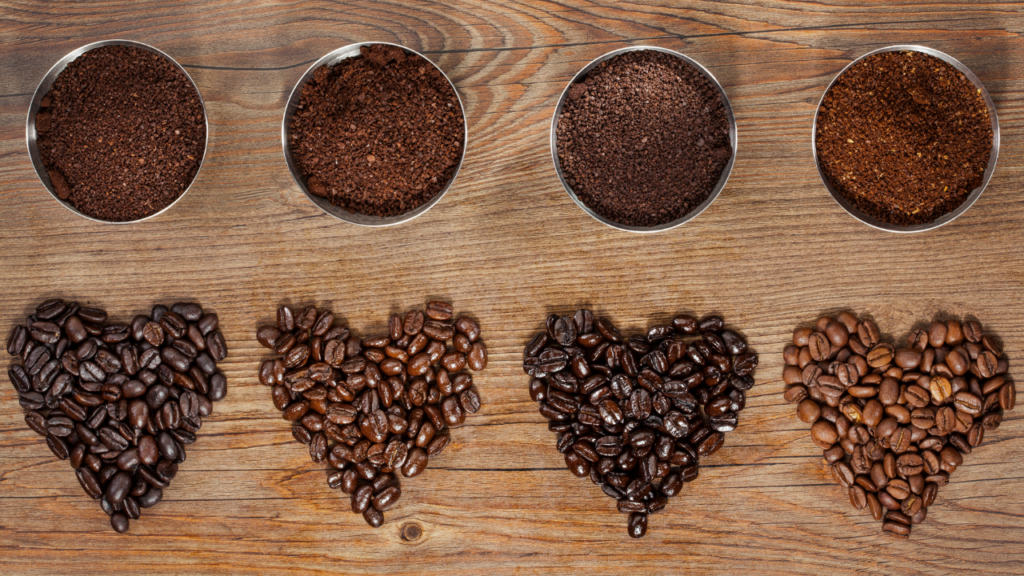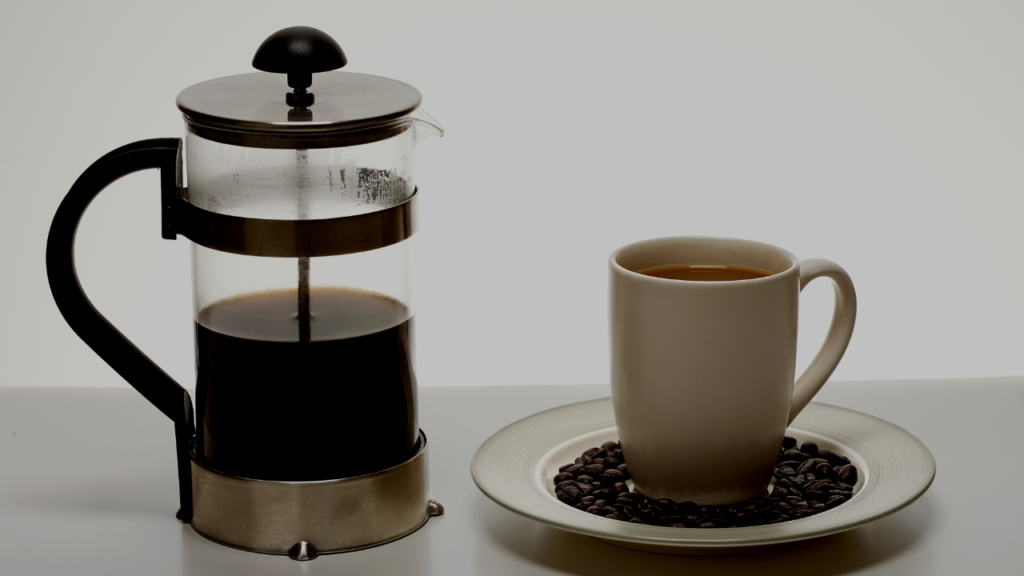
The amount of coffee you use in a French press will be determined by your particular taste for strength and flavor, as well as the size of your press. As a general rule, 1 to 2 teaspoons of coffee per 6 ounces of water is appropriate.
For a 12-ounce French press, use 12–24 grams, or 1–2 tablespoons, of coffee.
As a coffee lover with a lot of experience, I’ve tried out different brewing methods and ratios over the years. I’m here to share what I’ve learned about how much coffee to put in a French press. I’m here to help you make the perfect cup of French press coffee. So, take a seat, relax, and let’s dive into the world of making coffee with a French press!
Table of Contents
The French Press Coffee-to-Water Ratio

The ratio of coffee to water that is generally used in a French press is 1:15, which translates to 1 gram of coffee for every 6 ounces of water. On the other hand, this ratio is flexible and can be changed based on each person’s taste and how strong they want their coffee to be.
Some coffee lovers may prefer a stronger coffee and use a ratio of 1:13, while others may prefer a milder coffee and use a ratio of 1:18. The ratio of water to coffee should be adjusted accordingly.
The best way to find the right coffee-to-water ratio is to try different amounts of coffee and water until you find one that tastes good to you and the way you like your coffee to taste.
For accuracy, use the calculator below to determine the french cup-coffee ratio.;
How to Use a French Press, Step-by-Step

Here are the things you will need.
- Coffee
- French press
- Bur grinder
- Kettle
- Scale
- Timer
- Wooden spoon
- Fresh clean filtered water
- Mug
Step 1: Pre-heating your French Press

Start off by pre-heating your French press with boiling water and pouring it out after 30 seconds. Shake the French press so that the whole body, including the plunger, absorbs water. Remember to also preheat your cup.
Tips: If you are using a French press that has a metal lid, watch out during the preheat to avoid getting burned.
Step 2: Grind your Coffee bean

Using a digital scale, weigh your coffee bean and grind it to the consistency of sea salt. We used a measurement of 28 grams of coffee beans and 16 ounces of water. We are looking to make milder coffee as opposed to strong coffee.
Pre-ground coffee sold out there may be very coarse, which will lead to the clogging of the french press filter. A very fine one will lead to the filter not being able to hold the small, fine grind.
Tips: It’s best to grind the coffee bean yourself and brew within 15 minutes of grinding to avoid losing much of the coffee’s aroma.
Step 3: Heat water
Heat your water to 200 degrees F. If you are unsure about 200 degrees, get the water to a boil and let it sit for one minute. Leaving boiling water to sit for one minute will get it to 200 degrees.
While you’re waiting, pour the ground coffee into the empty French press and shake it to even the grinds.
Tips: Don’t use tap water for your French press. Only use fresh, clean, filtered water for the best French press coffee.
Step 4: Add water.

First, add 20% of the water, circling the grounds to evenly moisten them. Stir for 30 seconds with a chopstick or wooden stick. This will help to wet clumps of dry grounds that haven’t been soaked in water.
Add the remaining water and close the lid. While closing the lid, stop the plunger above the level of the water and coffee grounds. Wait for 4 minutes while the coffee blooms.
Tips: If you want to keep the glass from breaking, don’t stir your french press with a metal spoon or anything else made of metal.
Step 5: Plunge and Pour

When the timer reaches 4 minutes, gently lower the plunger all the way. Pour all of the coffee from the French press into a cup or carafe slowly, and enjoy!
Tips: A gentle plunge with a slow pour will reduce sediments in your coffee.
The grind continues to bloom if you leave it in the press after the 4 minutes mark. This will leave your coffee with a bitter taste.
Brewing French Press with the James Hoffman Method
James Hoffman is a coffee consultant and author. He is also a barrister who knows a lot about coffee. He came up with “The Ultimate French Press Technique,” his own French press method that is becoming increasingly popular.
If you are a coffee enthusiast who enjoys experimenting with various methods of brewing coffee, you might want to experiment with his style of French press coffee as well.

Let’s jump right into the steps
Step 1: Patience.
Instead of the standard 4 minutes for a French press coffee, this technique will take you 9-10 minutes. If you are in a hurry, this won’t work for you.
You will need a little patience to get a cup of coffee without any of the sediments at the bottom.
Step 2: Acquire Excellent Coffee.
Just like the normal procedure above, you will need a good quality coffee bean. Freshly roasted and measure with a scale. (30 grams of coffee to 500 grams of water)
Step 2: Ground Coffee
Medium grind your coffee. Pour the coffee into the French press, followed by the right amount of water after boiling. In this technique, you will pour all the water you need at once and wait for 4 minutes.

Step 3: Stir the Crust
Using a spoon, stir the crust that foams on top of the water. Lots of crust will start to fall off, leaving bits on top.
Next, using 2 spoons, scoop out the remaining crust on top and throw it away.
Step 4: Wait for additional 5 mins
Waiting an extra 5 minutes can be frustrating. The longer you leave it, the better it will taste. As you wait, the remaining float settles down in the press.
The simple way to look at it is that even if you pour the coffee at the 4 mins mark, it’s too hot to drink right away. Remember to leave the press open at this time.
While waiting for the 5-minute mark, you can either read newspapers, make breakfast, or do other house chores.
Step 5: Filter and drink
After 5 minutes, cover the press with a plunger. Do not plunge all the way because if you do, you will stir up all the sediment all over again.
Allow the plunger to rest on the surface of the coffee. This way it’s simply used as a strainer while you pour your coffee
Overall, the James Hoffman French Press Technique is a great choice for coffee lovers who value rich flavor and control over the brewing process. However, it may not be the best choice for those who are looking for a quick and convenient coffee-making method.
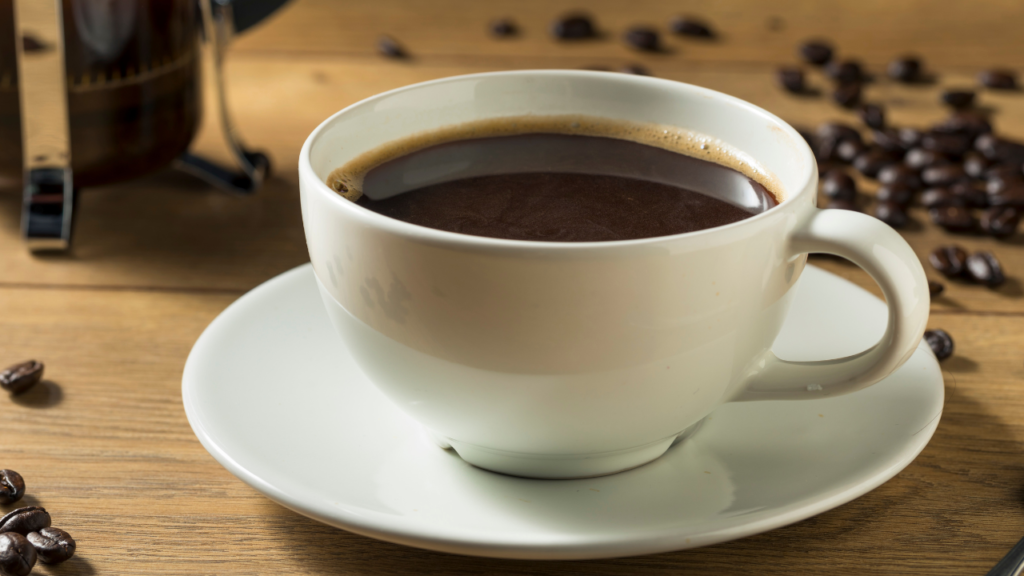
Tips for French Press perfection
Here are some tips for achieving the perfect cup of French Press coffee:
- Use High-Quality Coffee: The quality of the coffee beans is one of the most important factors in achieving the perfect cup of French Press coffee. Look for high-quality, freshly roasted beans and avoid using pre-ground coffee, which can quickly lose its flavor.
- Use the Right Grind Size: The grind size is crucial to the flavor and strength of the coffee. A coarse grind is ideal for French Press coffee, as it allows the coffee to steep without becoming too bitter.
- Measure the Coffee and Water: Consistent measurements of coffee and water are essential for achieving the perfect cup of French Press coffee. Use a digital measuring scale to ensure you are using the correct amount of coffee to water ratio.
- Use the Right Water Temperature: Use water that has been heated to about 200°F (96°C) to achieve the best flavor extraction.
- Steep for the Right Amount of Time: Steeping time is important for the flavor and strength of the coffee. A steeping time of 4 to 5 minutes is ideal for French Press coffee, but you can adjust the steeping time to suit your preferences.
- Stir: Coffee should be stirred to ensure that all the grounds receive the same quantity of water after 4 minutes.
- Plunge Slowly: To prevent upsetting the grinds and imparting an unpleasant flavor, plunge slowly and steadily.
- Clean the French Press Thoroughly: A clean French Press will result in better-tasting coffee. Make sure to clean the French Press thoroughly after each use to remove any oils or residue that can affect the flavor of your coffee.
Pros and Cons of French Press Coffee

Pros of French Press Coffee:
1. Rich Flavor: The French Press makes it possible to steep the coffee for a more extended period of time, which results in coffee that is more robust, flavorful, and full-bodied.
2. Control over the Brew Strength: With the French Press, you can adjust the steeping duration to your liking, allowing you to brew coffee with just the right amount of strength.
3. Portable: Because of their compact size, French presses can be easily packed for a camping trip or vacation and used to brew a good cup of coffee wherever you may be.
4. Affordable: A French Press is an excellent option for individuals on a tight budget because it is less expensive than other coffee makers.
Cons of French Press Coffee:
1. Coarse Grind: Regular coffee grinders aren’t always up to the task of producing the coarse grind required for use in a French Press.
2. Sediments: Because the French Press’s mesh filter isn’t as fine as those used in other coffee makers, some coffee grounds may make it into the cup.
Takes more time: French Press coffee needs more steeping time than other types of coffee.
4. Difficult to Clean: Cleaning the French Press can be challenging, especially if you don’t take it apart after each usage.
Best Coffee In French Press

The “best” French press coffee depends on personal choice. However, there are some general guidelines for choosing a French press coffee.
The full, strong flavors of a French press are best showcased by medium- to dark-roasted coffee. It’s vital to choose beans with a good body and low acidity for the French press because it extracts more.
Arabica beans are the best for a French press with their sweet, fruity flavor. Robusta beans are stronger and may be preferable for some people.
To get the best coffee for your French press, try different brands and roasts until you find one you like.
How to clean a French Press
It is essential to clean a French press in order to guarantee that the coffee you make with it tastes fresh and is free of any residue or oils that could alter its flavor. The following actions should be taken to clean your French press:
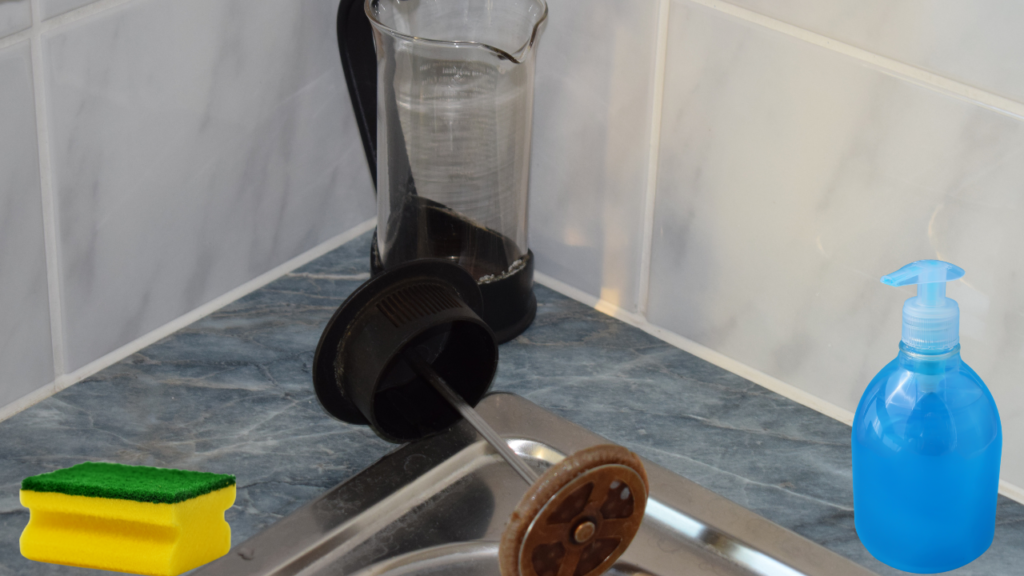
- Disassemble the French Press: Take the plunger and mesh filter out of the carafe. Rinse the mesh filter thoroughly to remove any coffee grinds.
- Rinse the Carafe: Clean the carafe with hot water to remove coffee oils.
- Soap Washing: Warm soapy water should be used to clean the carafe and mesh filter. Remove any remaining coffee oils or residue from the carafe and mesh filter by scrubbing with a brush.
- Rinse: Use hot water to thoroughly rinse the carafe and mesh filter to eliminate any trace of soap.
- Dry the French Press: Use a clean cloth to dry the carafe and mesh filter. Before reassembling the French Press, make sure the carafe and the mesh filter are totally dry.
- Reassemble the French Press: Put the mesh filter back into the carafe of the French Press and reattach the plunger.
Why is French Press Coffee so Popular?
French press coffee is popular for several reasons. Its delicious flavor is one explanation. French presses extract coffee’s oils and flavors by steeping coarse grinds in hot water. This produces a robust, smooth, and flavorful coffee that many people like.
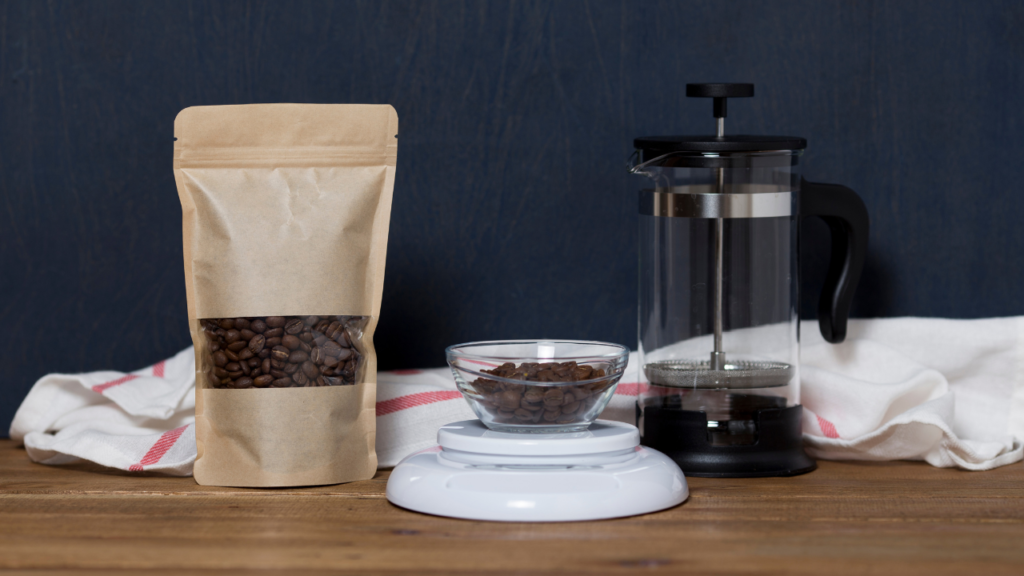
Its ease of brewing is another draw. French presses are simple to operate and require simply coffee, water, and a heat source. This makes it accessible to a wide spectrum of coffee lovers, from experts to those looking for a simple way to prepare coffee at home.
Finally, French presses allow greater control and customization than other brewing systems. French presses let you choose water temperature, steeping time, and coffee-to-water ratio. This lets coffee aficionados make their ideal cup.
French press coffee is loved worldwide for its rich flavor, simplicity, and customization.
SEE ALSO:
Conclusion
Now that you know how much coffee to put in your French press, it’s a lot easier to make coffee. Even though there isn’t a hard-and-fast rule about how much coffee to use with each cup of water, it’s important to know the right amounts to make a great cup of coffee.
Try out different amounts of coffee to water until you find the right one for your taste. Don’t forget to preheat your French press, grind your coffee beans correctly, use filtered water, and plunge gently for a cup of coffee that’s full of flavor, smells good, and has almost no sediment.
With these tips, you can make French press coffee like a pro.







